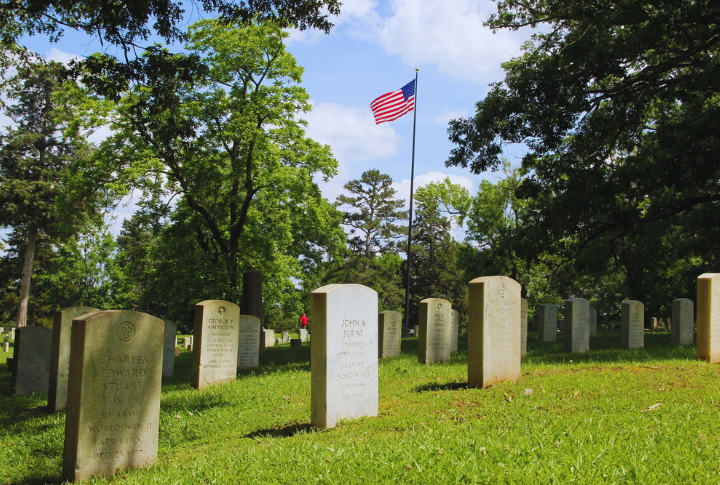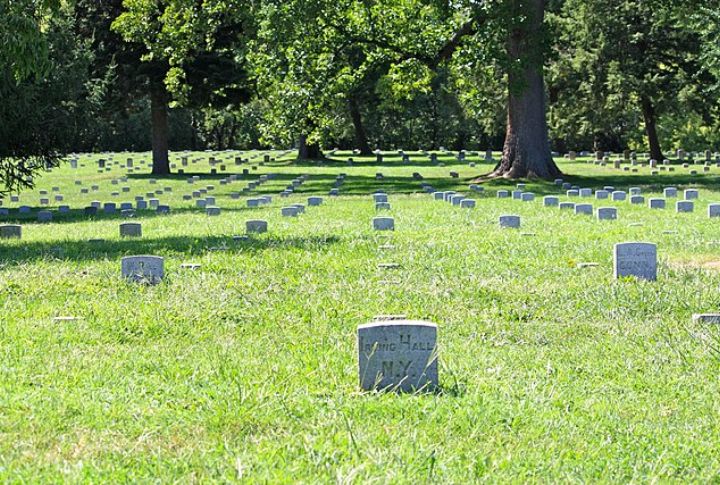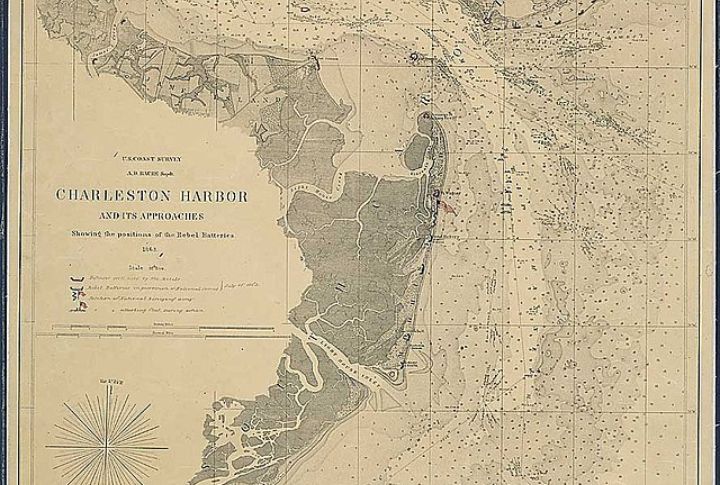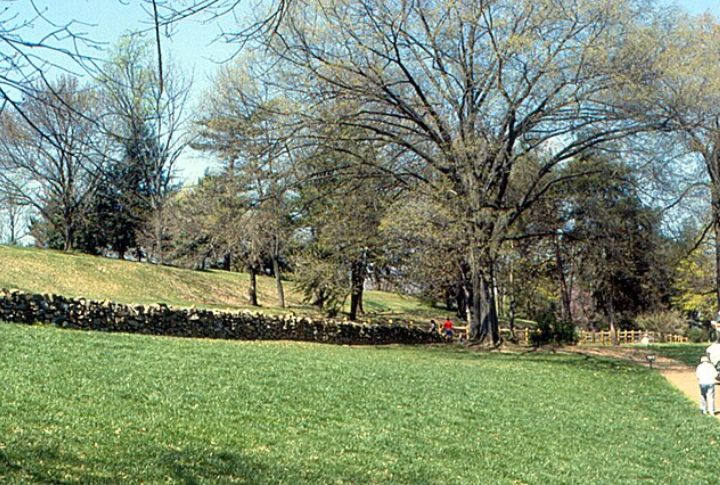
History is often written in blood and bravery, with battlefields serving as the canvas for the stories of conflict that have shaped nations. In America, these historic sites are silent witnesses to the courage, sacrifice, and moments that have defined the country’s path. So, let’s find fifteen historic battlefields where the echoes of courage and sacrifice still whisper through the landscapes, telling the stories that have shaped the nation’s destiny.
Antietam National Battlefield

Located along Antietam Creek in Sharpsburg, Washington County, Maryland, Antietam National Battlefield is a preserved area under the National Park Service. It commemorates the Battle of Antietam, which became the stage for the bloodiest single day in American history. With 22,727 soldiers dead, wounded, or missing, the toll was staggering.
Chalmette Battlefield

At Chalmette Battlefield, history speaks through its towering monument, reconstructed American rampart, and 1830s house. This site commemorates the Battle of New Orleans in 1815, where American forces repelled a British assault in just over 30 minutes. The battlefield, with outdoor exhibits and a visitor center, vividly recounts this decisive clash that saw over 2,000 British casualties compared to only 71 American losses.
Chancellorsville Battlefield

Spanning across both sides of modern-day Route 3, Chancellorsville Battlefield encompasses woods, fields, and roads that witnessed one of the most audacious maneuvers of the American Civil War. From April 30 to May 6, 1863, Confederate General Robert E. Lee orchestrated what is hailed as his “perfect battle.” Despite facing a larger Union force, Lee’s bold decision to divide his army resulted in a stunning Confederate victory.
Siege of Charleston

During the American Revolutionary War from March 29 to May 12, 1780, British forces besieged Charleston, South Carolina, resulting in an American defeat. After six weeks of intense fighting, Major General Benjamin Lincoln gave up the city to the British. Today, 88 acres of battlefield land related to the siege are preserved by the American Battlefield Trust and its partners as of mid-2023.
Chickamauga Battlefield

The Chickamauga Battlefield Visitor Center, located at the north end of the site, features exhibits on the Battle of Chickamauga, including the Fuller Gun Collection. Named after West Chickamauga Creek, known as the “river of death” in Cherokee, this battlefield was the site of one of the bloodiest clashes of the American Civil War.
Fredericksburg Battlefield

Surrounding the downtown center of Fredericksburg, Virginia, the battlefield features landmarks such as Lee’s Hill, which served as Confederate General Robert E. Lee’s headquarters during the battle, and Howison Hill, crowned with Confederate artillery that devastated Union attackers. President Abraham Lincoln called the battle a “butchery,” due to its brutal toll on both sides during the American Civil War.
Gettysburg Battlefield

Set amidst Pennsylvania’s landscape, the Gettysburg Battlefield is a pivotal moment in American heritage. Here, the Union’s triumph over General Robert E. Lee’s ambitious Northern offensive earned it the title “High Water Mark of the Rebellion.” Known as the fatal conflict of the Civil War, this site profoundly influenced President Abraham Lincoln’s enduring “Gettysburg Address.”
Minute Man National Historical Park

Minute Man National Historical Park, overseen by the National Park Service, encompasses 970 acres (392.5 ha) across Lexington, Lincoln, and Concord, Massachusetts. It honors the opening battle of the American Revolutionary War and includes the historic Wayside, once home to three notable American authors.
Kennesaw Mountain National Battlefield Park

In June 1864, the Battle of Kennesaw Mountain was at the center stage of the Atlanta Campaign of the Civil War. While it marked a tactical setback for the Union, it did not halt General Sherman’s advance toward Atlanta. Today, Kennesaw Mountain National Battlefield Park preserves this historic site, which showcases Confederate trenches and Union rifle pits.
Manassas National Battlefield Park

Situated in Prince William County, Virginia, north of Manassas, this National Park Service site preserves the historic battlegrounds of the First and Second Battles of Bull Run (Manassas). Drawing over 700,000 visitors annually, it provides insights into the conflicts that defined America’s Civil War era.
Perryville Battlefield State Historic Site

A 745-acre park in Perryville, Kentucky, commemorates the site of the Battle of Perryville. It features an interpretive museum and monuments, including cannons and signage, that observe key battle events. The battle took place in 1862 between the Union Army of Ohio and the Confederate Army of Mississippi.
Saratoga National Historical Park

Saratoga National Historical Park holds the remains of the Battles of Saratoga in Stillwater, eastern New York. In 1777, American forces achieved victory, forcing a major British army to surrender. As a result of this event, France acknowledged American independence and played a pivotal role as a key ally in the war effort.
Shiloh National Military Park

Preserving the Shiloh and Corinth battlefields from the American Civil War, Shiloh National Military Park marks the site of the Battle of Shiloh. This battle initiated a six-month campaign to control the strategic railroad junction at Corinth. The park’s visitor center offers exhibitions, films, and a self-guided auto-tour, providing visitors with insights into these events.
Vicksburg National Military Park

The park honors the Battle of Vicksburg with 1,325 monuments, 20 miles of preserved trenches and earthworks, a 16-mile tour road, and a 12.5-mile walking trail. Visitors can explore two antebellum homes, view 144 cannons, and see the restored gunboat USS Cairo, which sank in 1862. Additionally, the park showcases Grant’s Canal site.
Colonial Historical National Park

Colonial Historical National Park, part of Virginia’s Hampton Roads region, is a National Park Service site. It preserves and interprets multiple locations tied to the Colony of Virginia and broader U.S. history. These encompass Jamestown, the first English settlement, and Yorktown battlefields, where the British Army faced defeat. The park has over 3 million visitors annually.


Comments
Loading…